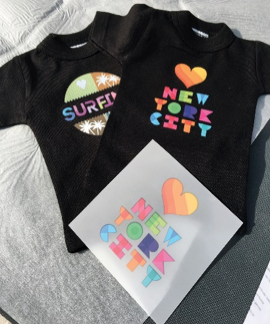Marabu’s experts in screen, pad and digital printing returned from the FESPA 2017 trade fair in Hamburg with a number of key insights. In particular, they reported on the keen interest shown in solutions that combine screen and digital methods.
Marabu’s cold-peel process for digital textile-transfer printing proved to be a magnet for FESPA 2017 visitors looking for new solutions in this field. Specifically, the image is printed using the CMYK process onto a specially coated film, without the need for complex prepress work. Screen printing is only required for the white blocking layer or, where appropriate, the application of adhesive. The final patches are produced by means of a heat press.
As Matthias Schieber, Product Manager for Digital Printing Inks, explains: “The printed image has a pleasant, soft handle, and is flexible – it does not stick to fabric like a rigid block, like many flex foils do. And that is not its only attraction – visitors were pleased to hear that this method significantly reduces production costs.”
Several visitors voiced a growing need for solutions that combine printing technologies for glass and plastic touchscreens. For these scenarios, Marabu is able to develop solutions tailored to the customers’ specific requirements. In all, a clear trend has emerged: screen printing will no longer be used in isolation, but increasingly in tandem with digital. Customers will enjoy the best of both worlds, in particular the proven strengths of screen printing: highly precise, reproducible colours, the method of application and greater durability. In future, digital and screen will increasingly be deployed as a dynamic duo that will deliver significant advantages for a variety of printing tasks and substrates.







